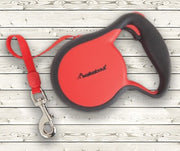Dog Friendly Veggies

As much as some pet parents hate it, our dogs can’t seem to get enough food, especially “people food.” If you are looking for a healthier treat option for Fido, you don’t have to look very far. The vegetables on this list are filled with vitamins and minerals, some are even low in calories and fat while providing fiber to promote healthy digestion.
As with all food, it is important to remember portion size. Keep track of your dog’s intake if you are supplementing dog food with vegetables. Watch out for any reactions that can occur. Vegetables can give your dog gas, so don’t overdo the amount you give them. If this is the first time giving your dog vegetables, give him a small piece first to see their reaction.
Dogs do enjoy these vegetables in raw form; however, they don’t get as many nutrients this way as they have a shorter digestion system. Dogs can eat vegetables raw, cooked, steamed, baked, roasted, grilled, dehydrated, or even pureed. So, get creative when fixing this special treat, but remember that salt is not good for your pets.
The following vegetables are safe for your dog to eat, with suggested portion sizes for treats and the benefits from these veggies.
Potatoes
- Dog treat portion size: 1 or 2 wedges, depending on dog’s size
- Benefits: Good source of vitamins C and B6, potassium, manganese, and fiber
- Potatoes must be cooked in some way and should never be given to your dog raw, as raw potato can be toxic
Broccoli Florets
- Dog treat portion size: One or two bite-size florets
- Benefits: Great source of Vitamins C and K. Good source of Vitamin A, folate, manganese and fiber
Brussel Sprouts
- Dog treat portion size: 1/2 to 2 sprouts, depending upon the dog’s size
- Benefits: Great source of vitamins K and C. Good source of manganese, folate, fiber, potassium and vitamins A, B1, and B6
Carrots
- Dog treat portion size: One or two bite size pieces
- Benefits: Great source of vitamin A. Good source of vitamins K and C, fiber, and potassium
Celery
- Dog treat portion size: One or two bite size pieces
- Benefits: Great source of vitamins A, B, and C
Cucumbers
- Dog treat portion size: 1 to 2 bite-size pieces
- Benefits: Good source of vitamin K
Green Beans
- Dog treat portion size: 1 to 2 bite-size pieces
- Benefits: Good source of vitamins C, K, and A, manganese, and fiber
Peas
- Dog treat portion size: One or two Sugar snap or snow peas. For English, 1 or 2 tablespoons – depending on the dog’s size
- Benefits: Great source of vitamin K, and C. Good source of manganese, fiber, folate, phosphorus, protein, magnesium, copper, iron, zinc, potassium and vitamins B1, A, B6, B3, and B2
Sweet Potatoes
- Dog treat portion size: Half or one dehydrated chew, depending on the size of the dog
- Mix 1 to 2 tablespoons of mashed boiled or steamed sweet potato in dog’s dry dog food
- Benefits: Great source of vitamin A. Good source of vitamins C, B6 and B5, manganese, potassium, and fiber
Remember, there are some vegetables you should not feed to your dog. Never offer your dog onions or fresh garlic. Talk to your veterinarian if you have questions or concerns regarding vegetables and your dog’s diet.
Sources:
- https://be.chewy.com/vegetables-for-dogs/
- https://www.akc.org/expert-advice/nutrition/natural-foods/fruits-vegetables-dogs-can-and-cant-eat/
Previous article

Next article

Related posts
View all-

What Can You Use Instead of Cat Litter?
Traditional cat litter is convenient, but it’s not the only option. Many cat owners look for alternatives to reduce waste, save money, or avoid chemicals found in clay-based kitty litter. Some options offer better odor control, while others are more eco-friendly or gentler on a cat’s paws.
Read Article -

How to Keep My Backyard Smelling Fresh
A clean backyard should smell fresh, unlike pet waste, smoke, or mold. Bad smells can linger, especially when dog poop, urine, or food scraps attract flies and bacteria. If your yard has a foul odor, it's time to take action. The first step is cleaning up pet feces, trash, or rotting food. A garden hose can wash away dirt and urine from artificial turf, patios, and decks. To neutralize odor, Use baking soda, white vinegar, and essential oils.
Read Article -

What Supplies Do First-Time Cat Owners Need?
Bringing home a new cat is exciting, but making them feel safe and comfortable takes more than love. First-time cat owners must prepare with the right supplies to ensure a smooth transition. From a litter box to cat food and a warm bed, having the basics ready can help your new kitty settle in faster. This guide covers everything a new cat owner needs to make their new pet feel at home.
Read Article



